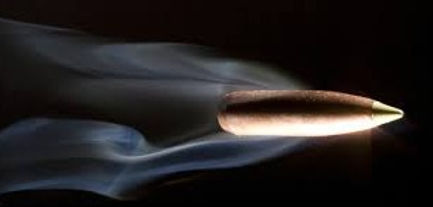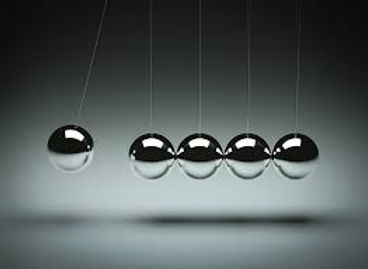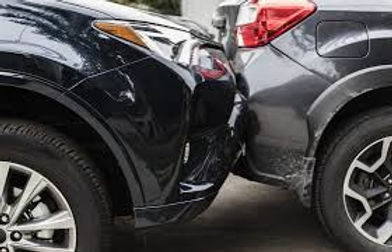
UNIT 5: MOMENTUM
Brief Overview
Momentum is the quantity of motion in a moving object. It is everywhere in every object on this planet; anything with a mass has momentum.
TERMINOLOGY
MOMENTUM
Momentum is the quantity of motion that an object has at a point and is a result of the velocity an object with mass is traveling at.
IMPULSE
Impulse is measured as the difference in momentum from the initial point to the final point. It is also correlated to the net force acting on an object and the distance on which it is acting
COLLISIONS
A collision is when two objects collide with each other and it can possibly result in a transfer in energy or momentum depending on the type of collision.

CONSERVATION OF MOMENTUM
Conservation of Momentum
The law of the conservation of momentum states that momentum can never be destroyed or created. This means that within a system unless an external net force is acting upon the system during the time, the momentum will be conserved. This means there is no impulse
MOMENTUM CALCULATIONS
Momentum has one formula, p = mv however this formula can be applied in a number of ways when given different variables.
MOMENTUM
The formula to find momentum is given as p = mv. In this equation, m represents the mass of the object in question in kilograms and the velocity is given in meters/second. The units for momentum will be kg m/s. The direction of an object's momentum is always the same direction as the object's velocity. Every moving object has momentum. In order to change the momentum of an object, in most scenarios, the velocity of said object is changed. However, as per Newtons laws of motion an object of motion will always stay in motion unless acted on by an outside force, leading us to the conclusion that the momentum is always conserved unless an external net force is exerted on said object.
IMPULSE
Impulse can be used to find the force that was exerted on an object during an inelastic collision. It can be calculated in one of 3 ways. Either as the difference in momentum from initial to final, in which case you'd need the velocities and masses of each object before and after the transaction, or as the net force multiplied by the distance on which the collision took place. In the case that you are given a graph, it can also be calculated as the area under the curve of a momentum-time graph.
CENTER OF MASS
The center of mass of an object is the average of all its x and y positions. It will always maintain the same momentum throughout.
MOMENTUM BAR CHARTS
LIL charts are used to determine the impulse exerted in a problem and the initial momentum versus the final momentum of an object. It serves as a good way to put down what you know in the problem on a paper so that you can start to work out the problem from here.
KINEMATICS, FORCES, AND ENERGY
Above all, this unit is about building upon what you learned in the previous units. It is very important how to take the previous concepts and apply them here in these scenarios.
https://www.proprofs.com/quiz-school/story.php?title=conservation-energy

COLLISIONS
ELASTIC COLLISIONS
Elastic Collisions are collisions in which there is no deformation of colliding objects and no change in kinetic energy. This means that the momentum is conserved and the kinetic energy is conserved
INELASTIC COLLISIONS
Inelastic Collisions are collisions in which the momentum is conserved but the kinetic energy is not. Kinetic energy is lost in these collisions and the two objects move with different velocities (not stuck together)
TOTALLY INELASTIC COLLISIONS
Totally inelastic collisions are collisions in which after the two objects collide, there is only one velocity because the two objects stick together. Kinetic energy is lost. To calculate the final velocity in this type of collision you do p1+p2 = (m1+m2)vf.
https://www.bankrate.com/insurance/car/car-crash-statistics/